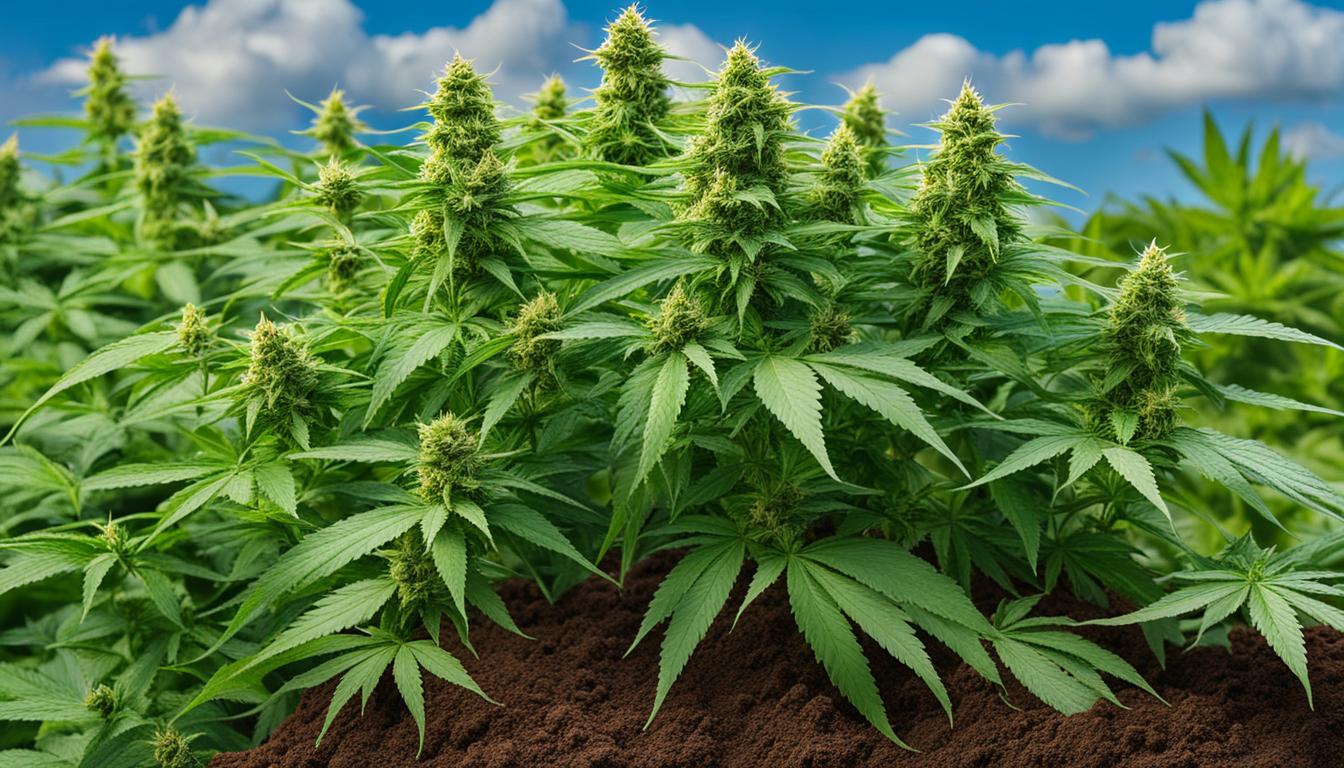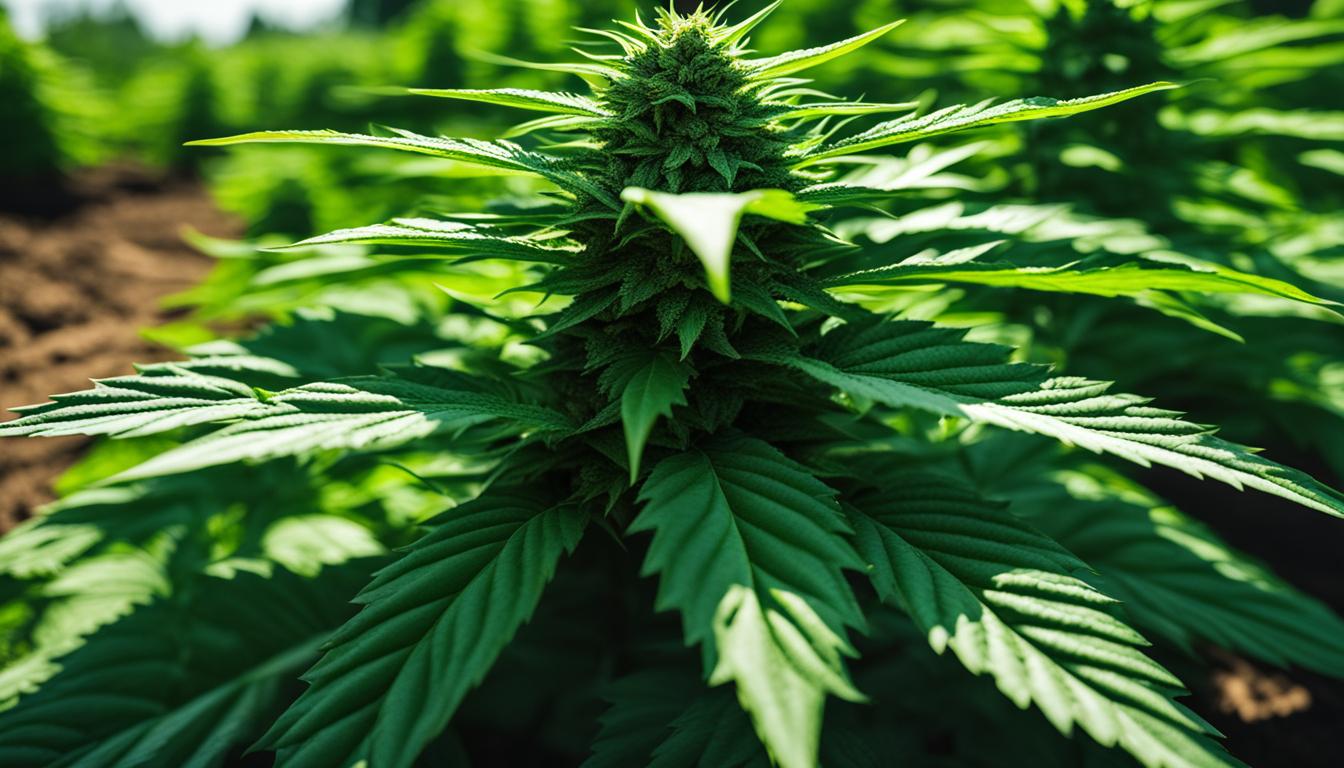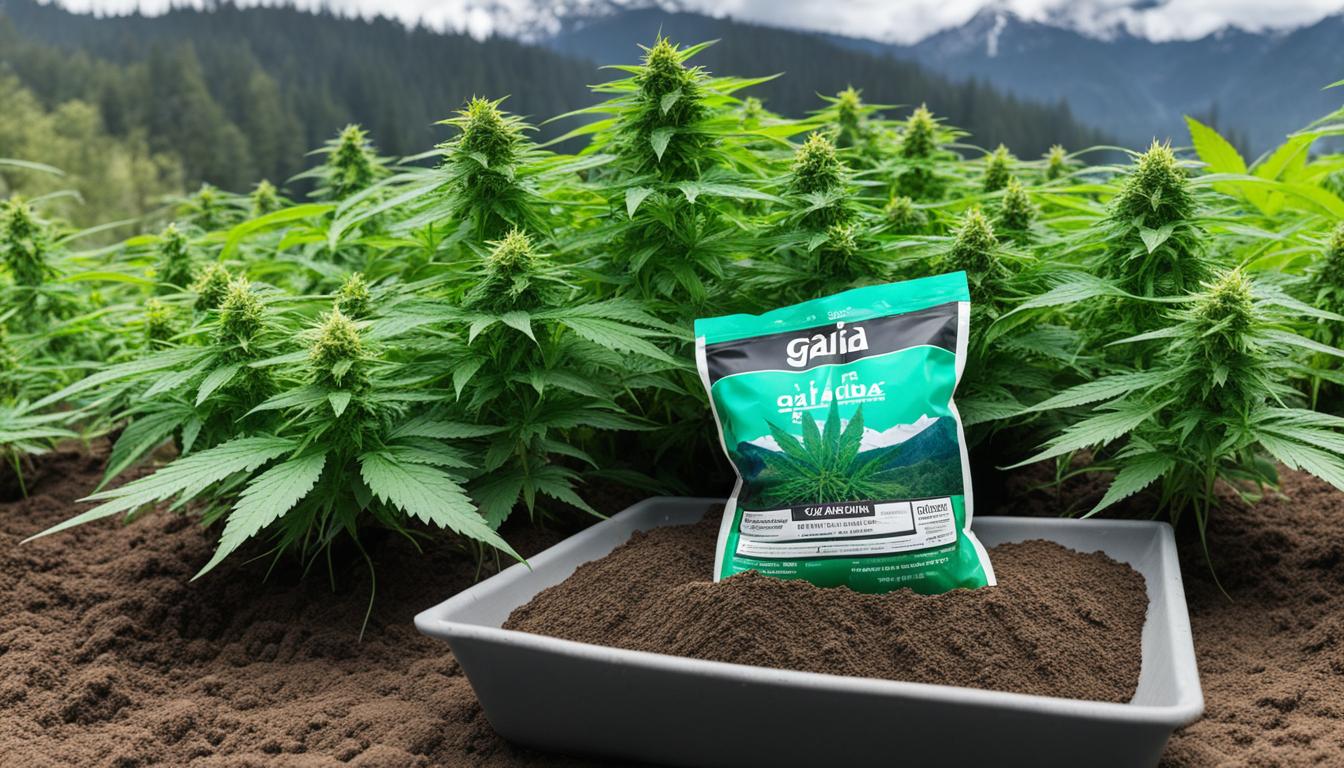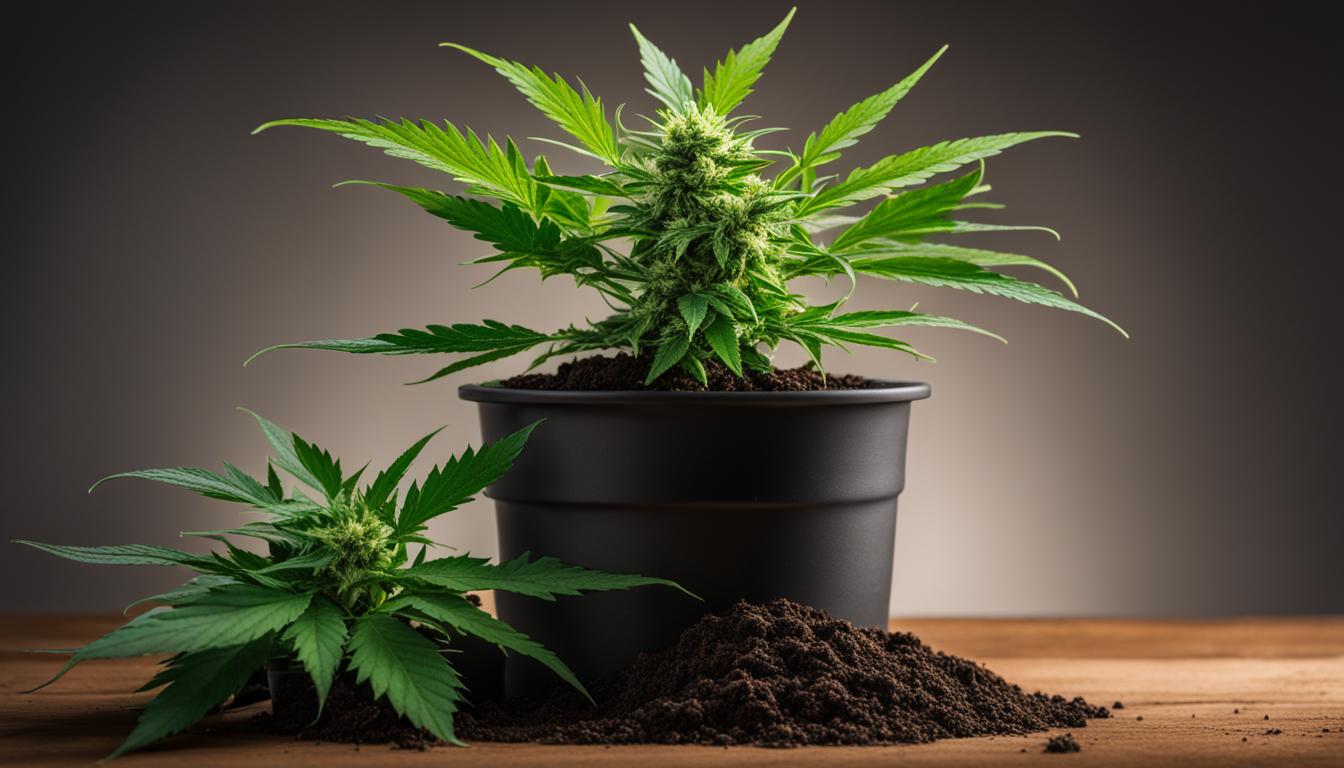Uncategorized
Best Engrais Cannabis for Healthy Growth & Yield
Feeding cannabis plants is essential for their growth and yield. Understanding the necessary NPK ratios for each stage of the plant’s life cycle is crucial for optimal results. Overfeeding is a common issue, so it’s important to find the best engrais cannabis products that provide the right balance of nutrients.
Key Takeaways:
- Feeding cannabis plants is vital for their growth and yield.
- Understanding NPK ratios for each stage of the plant’s life cycle is crucial.
- Finding the right balance of nutrients is important to avoid overfeeding.
- The best engrais cannabis products provide the necessary nutrients for healthy plant development.
- Choosing the right fertilizers can lead to optimal results in cannabis cultivation.
The Importance of NPK Ratios for Cannabis Plants
When it comes to growing cannabis, providing the right balance of nutrients is crucial for healthy plant growth and optimal yields. One of the key factors to consider is the NPK ratios, which refer to the levels of nitrogen (N), phosphorus (P), and potassium (K) in the fertilizers or nutrient solutions used.
Different stages of cannabis plants’ life cycles have varying NPK ratio requirements. Let’s take a closer look at these ratios for each stage:
Seedling Stage
During the seedling stage, fertilization is typically not required as the seedlings receive the necessary nutrients from the rich soil they are planted in. High-quality soil should provide all the nutrients the seedlings need to establish healthy root systems and initiate early growth.
Vegetative Stage
As cannabis plants enter the vegetative stage, they require a higher level of nitrogen (N) for robust leaf and stem development. The ideal NPK ratio during this stage is generally 3:1:1 (N:P:K), emphasizing the importance of nitrogen for lush vegetative growth. However, it’s essential to adjust the nutrient solution concentration based on the current ratio of the substrate to avoid overfeeding or nutrient imbalances.
Flowering Stage
Once cannabis plants transition to the flowering stage, their nutrient requirements change. During the early to mid-bloom phase, plants benefit from a lower nitrogen (N) content and higher phosphorus (P) and potassium (K) levels. A recommended NPK ratio for this stage is 1:3:2 (N:P:K), which promotes flower development and resin production. In the late flowering stage, a ratio of 0:3:3 (N:P:K) is commonly advised to further enhance flower growth and ripening.
It’s important to note that these NPK ratios can vary depending on the specific genetics of the cannabis strain being cultivated, environmental factors, and growing methods. Conducting regular pH and nutrient level tests throughout the plant’s lifecycle will help ensure the correct NPK ratios are maintained.
To give you a better understanding of NPK ratios for different cannabis growth stages, here’s a simplified table:
| Growth Stage | Nitrogen (N) | Phosphorus (P) | Potassium (K) |
|---|---|---|---|
| Seedling | Low | Moderate | Moderate |
| Vegetative | High | Moderate | Moderate |
| Early to Mid-Bloom | Low | High | Moderate |
| Late Flowering | None | High | High |
By understanding the importance of NPK ratios and adjusting nutrient solutions accordingly, cannabis growers can provide the optimum nutrition for their plants at each growth stage, resulting in healthy plants that yield high-quality flowers.
Organic vs. Synthetic NPK Fertilizer
When it comes to choosing the right fertilizer for your cannabis plants, you have two options: organic or synthetic. Both types have their advantages, and the choice depends on your preferred growing methods and the specific needs of your plants.
Organic Cannabis Fertilizer
Organic fertilizers are derived from natural sources and provide a more sustainable approach to plant nutrition. They are made from plant and animal matter, and often include ingredients like compost, manure, bone meal, and fish emulsion. One of the key benefits of organic fertilizers is that they release nutrients slowly, ensuring a steady supply over time.
Additionally, organic fertilizers are environmentally friendly, as they are free from harmful chemicals and pesticides. They promote soil health and microbial activity, creating a thriving ecosystem for your cannabis plants. As a result, organic fertilizers can improve the overall structure and fertility of your soil.
Moreover, using organic cannabis fertilizer reduces the risk of nutrient burn or lockout. The slow-release nature of these fertilizers prevents the accumulation of excessive nutrients, ensuring that your plants receive a balanced and consistent nutrient supply.
Synthetic NPK Fertilizer
Synthetic fertilizers, also known as chemical or inorganic fertilizers, are manufactured using chemical processes. These fertilizers provide a precise balance of nutrients and are designed for faster absorption by the plants. They often come in concentrated forms, allowing for easy application and accurate dosing.
The main advantage of synthetic fertilizers is their ability to deliver precise nutrient ratios tailored to the specific needs of the plants. This level of control allows growers to fine-tune their nutrient solutions and address any deficiencies or imbalances more effectively.
However, it is important to note that synthetic fertilizers can have a potential negative impact on the environment. The chemicals used in these fertilizers can lead to soil degradation and water pollution if not used responsibly. Therefore, it is crucial to follow the recommended dosage and application instructions provided by the manufacturer.

Ultimately, the choice between organic and synthetic NPK fertilizers depends on your preference, the resources available, and the goals of your cannabis cultivation. Organic fertilizers offer a natural and sustainable approach, while synthetic fertilizers provide precise nutrient control and faster results. Consider the needs of your plants and the environmental impact of your choices to make an informed decision for healthy, thriving cannabis crops.
How to Use NPK Fertilizer for Cannabis
Understanding the nutrient requirements of your cannabis strain is crucial for achieving healthy growth and optimal yields. Adjusting the feeding regimen according to these requirements can significantly impact the overall health and productivity of your plants. Some strains may require higher doses of fertilizer, while others may need lighter doses to thrive. Finding the right balance is essential to avoid nutrient deficiencies or excesses that can harm your plants.
When using NPK fertilizer for cannabis, it’s important to note that heavy feeding is not always beneficial and can lead to nutrient lockout. Overfeeding can overwhelm the plants and hinder nutrient absorption. It’s best to start with a moderate dose and monitor your plants closely. Slowly and steadily increase the nutrient dosage based on the response of the plants. This gradual adjustment allows you to fine-tune the feeding regimen and ensure optimal nutrient uptake.
Monitoring plant behavior is essential in determining the effectiveness of your fertilizer regimen. Keep an eye out for signs of nutrient deficiencies or excesses, such as discoloration, stunted growth, or burnt leaf tips. Adjust the nutrient dosing accordingly to address any issues and promote healthy growth.
Key Points:
- Understand the nutrient requirements of your cannabis strain.
- Start with a moderate dose of NPK fertilizer.
- Monitor plant behavior for signs of nutrient deficiencies or excesses.
- Adjust the nutrient dosing gradually and based on plant response.
“Finding the right balance of nutrients is crucial for the successful cultivation of cannabis.” – Me
By using the right cannabis growing nutrients and carefully adjusting the fertilizer regimen, you can ensure that your plants receive the essential nutrition they need for robust growth and abundant yields.
Example NPK Fertilizer Schedule:
| Growth Stage | NPK Ratio |
|---|---|
| Seedling | 1:1:1 |
| Vegetative | 3:1:1 |
| Flowering (Early to Mid-Bloom) | 1:3:2 |
| Flowering (Late Bloom) | 0:3:3 |
Note: The NPK ratios provided here are general guidelines and may vary based on specific strains and growing conditions. It’s important to adjust the nutrient solution based on the needs and response of your cannabis plants.
Nutrient Requirements for Autoflowering Cannabis Plants
When it comes to nutrient requirements, autoflowering cannabis plants differ from photoperiod plants. They have lower nutrient needs, making it essential to adjust the feeding regimen accordingly. Starting with a lower amount of fertilizer and gradually increasing if necessary is the best approach for these plants.
The exact nutrient ratios for autoflowering strains are still a topic of debate among growers and experts. However, a good starting point is to use the same nutrient ratios as photoperiod plants but in reduced amounts. This ensures that the plants receive the necessary nutrients while preventing potential nutrient imbalances or excesses.
Autoflowering plants have a shorter life cycle and tend to have faster growth rates compared to photoperiod plants. This means that the nutrient requirements may vary throughout their growth stages. It’s important to closely monitor the plants for any signs of nutrient deficiencies or excesses and adjust the nutrient solution accordingly.
Using a nutrient solution specifically formulated for cannabis plants can provide the necessary nutrients in the right proportions. These solutions are designed to meet the unique nutrient needs of cannabis plants and support their healthy growth and development.
Benefits of Using Nutrient Solutions for Autoflowering Cannabis Plants
“Nutrient solutions provide a convenient way to deliver the essential nutrients to autoflowering cannabis plants. They are formulated to provide the right balance of macronutrients and micronutrients, ensuring that the plants receive all the elements they need for optimal growth.”
Using a nutrient solution eliminates the guesswork involved in manually mixing and measuring fertilizers. It provides a consistent and precise nutrient delivery system, reducing the risk of nutrient deficiencies or excesses. With the proper nutrient solution, growers can ensure that their autoflowering plants have access to all the required nutrients throughout their growth cycle.
It’s important to follow the manufacturer’s instructions when using a nutrient solution. Different brands may have their own recommended dosage and feeding schedules. By following these guidelines, growers can ensure that their plants receive the right nutrients at the right time.
Here is an example of a feeding schedule for autoflowering cannabis plants using a nutrient solution:
| Growth Stage | Recommended Nutrient Solution | Dosage | Frequency |
|---|---|---|---|
| Seedling Stage | Autoflowering Seedling Formula | 1/4 strength of regular dosage | Every other watering |
| Vegging Stage | Autoflowering Vegetative Formula | Regular dosage | Once every 1-2 waterings |
| Flowering Stage | Autoflowering Flowering Formula | Regular dosage | Once every 1-2 waterings |
Using a nutrient solution specific to autoflowering cannabis plants can simplify the feeding process and ensure that the plants receive the right nutrients for optimal growth and development.
Using Gaia Green Cannabis Soil Amendments
If you’re looking for organic cannabis soil amendments that can provide your plants with the essential nutrients they need to thrive, Gaia Green has you covered. Gaia Green offers a range of high-quality, organic-certified products that are specially formulated to promote optimal plant performance and bigger yields.
One of the key benefits of using Gaia Green cannabis soil amendments is their ability to increase microbial activity in the soil. These beneficial microorganisms play a crucial role in breaking down organic matter and making essential nutrients more readily available to the plants. By nurturing a diverse and active microbial community, Gaia Green amendments create a living soil environment that nourishes your cannabis plants from the roots up.

By choosing Gaia Green products, you can be confident that you’re using high-quality, organic-certified amendments in your cannabis cultivation. Gaia Green is committed to sustainable and environmentally friendly practices, and all their products are OMRI (Organic Materials Review Institute) Organic Certified.
Here is an overview of some popular Gaia Green cannabis soil amendments:
| Product | Key Features | NPK Ratio |
|---|---|---|
| Gaia Green All Purpose 4-4-4 | Provides balanced nutrition for all stages of plant development | 4-4-4 |
| Gaia Green Power Bloom 2-8-4 | Boosts flowering and fruiting processes | 2-8-4 |
| Gaia Green Glacial Rock Dust | Rich in essential minerals and trace elements | N/A |
These are just a few examples of the many Gaia Green products available. Each product is carefully formulated to meet the specific nutritional needs of cannabis plants at different stages of growth. By incorporating Gaia Green soil amendments into your cultivation practices, you can ensure that your plants receive the necessary nutrients for healthy development and maximum yield.
How to Amend Soil with Gaia Green
When it comes to cultivating healthy and thriving cannabis plants, amending the soil with Gaia Green cannabis soil amendments can make a significant difference. Gaia Green offers a range of organic products that provide the necessary nutrients for optimal plant performance and larger yields. In this section, I will guide you through the process of amending your soil with Gaia Green and share the recommended nutrient schedule for autoflowers.
Mixing Gaia Green Soil Amendments
When using Gaia Green soil amendments, there are two main methods of application: mixing them into the soil or top-dressing the growing medium. Both methods can be effective, so choose the one that suits your preferences and growing setup.
To mix Gaia Green soil amendments into the soil, start by preparing your growing medium. Whether you’re using soil or coco coir, ensure it is well-draining and of good quality. Then, follow the recommended application rates provided by Gaia Green based on the size of your container. Mix the amendments thoroughly with the growing medium, ensuring an even distribution of nutrients.
If you prefer top-dressing, spread a layer of Gaia Green soil amendments on the surface of your growing medium. Gently work the amendments into the top layer with a fork or your hands, being careful not to disturb the roots of your plants.
Regardless of the method you choose, be sure to follow the recommended Gaia Green application rates and guidelines for the specific amendments you’re using.
Recommended Nutrient Schedule for Autoflowers
Autoflowering cannabis plants have different nutrient requirements compared to photoperiod plants. Gaia Green has developed a nutrient schedule specifically tailored for autoflowers, which includes the use of their All Purpose 4-4-4 and Power Bloom 2-8-4 amendments.
During the vegetative stage, apply Gaia Green All Purpose 4-4-4 at a rate of 1 tablespoon per gallon of soil or growing medium. This balanced amendment will provide the essential nutrients needed for healthy vegetative growth.
As your autoflowers transition into the blooming stage, switch to Gaia Green Power Bloom 2-8-4. Begin with a rate of 1 tablespoon per gallon of soil or growing medium, gradually increasing to 2 tablespoons per gallon as your plants progress through the flowering phase. The higher phosphorus content in Power Bloom promotes robust bud development and enhances overall flower production.
Here’s a summarized nutrient schedule for autoflowers:
| Stage | Amendment | Rate |
|---|---|---|
| Vegetative | Gaia Green All Purpose 4-4-4 | 1 tablespoon per gallon of soil/medium |
| Blooming | Gaia Green Power Bloom 2-8-4 | 1-2 tablespoons per gallon of soil/medium |
Following this nutrient schedule and adjusting the rates according to the specific needs of your plants will promote vigorous growth and abundant flowering in your autoflowers. Remember to monitor your plants closely and make any necessary adjustments based on their response.
Incorporating Gaia Green soil amendments into your growing practices not only enhances the nutrient availability for your plants but also contributes to the development of a healthy, living soil ecosystem. By creating a balanced and fertile environment, you can achieve outstanding results with your cannabis cultivation.

Benefits of Growing Cannabis with Perlite
When it comes to cultivating cannabis, using perlite as a growing medium offers a range of benefits for growers. Perlite is a mineral that is heated and expanded to create lightweight, porous particles that promote healthy plant growth. Whether you’re an experienced cultivator or a beginner, incorporating perlite into your cultivation process can significantly enhance the quality and yield of your cannabis plants.

Improved Drainage and Aeration
One of the key advantages of using perlite in cannabis cultivation is its excellent drainage capabilities. The porous nature of perlite allows excess water to drain away efficiently, preventing root rot and waterlogged soil. Proper drainage is essential for cannabis plants, as it helps maintain healthy root systems and prevents the risk of disease. Additionally, perlite improves aeration within the growing medium, ensuring that roots receive an adequate supply of oxygen for optimal growth.
Enhanced Nutrient Uptake
Perlite acts as a nutrient carrier, allowing essential minerals and fertilizers to evenly disperse throughout the soil or coco coir. Enhanced nutrient uptake is crucial for cannabis plants to achieve optimal growth and development. By incorporating perlite into the growing medium, you ensure that the roots have access to a well-balanced nutrient solution, promoting healthy foliage, robust stems, and vibrant flowers.
Reduced Risks of Overwatering
Overwatering is a common mistake made by many cannabis cultivators, which can lead to various issues such as root rot, nutrient deficiencies, and stunted growth. Perlite helps mitigate the risks associated with overwatering by improving drainage and preventing water from becoming trapped in the growing medium. The lightweight and porous nature of perlite create air pockets that allow excess water to drain away, helping maintain the ideal moisture levels for healthy cannabis plants.
Healthier and Higher-Yielding Crops
By providing better drainage, enhanced aeration, and improved nutrient uptake, perlite ultimately contributes to the overall health and vigor of cannabis plants. Healthy plants are more resilient against pests, diseases, and environmental stresses, resulting in higher yields of top-quality cannabis. Whether you’re growing for personal use or commercial purposes, incorporating perlite into your cultivation process can significantly improve the productivity and quality of your crops.
How to Use Perlite for Growing Cannabis
Perlite is a versatile growing medium that can greatly benefit cannabis cultivation. By adding perlite to your soil or coco coir, you can improve the overall health and yield of your cannabis plants. Here’s a step-by-step guide on how to use perlite effectively:
- Choose the Right Ratio: The recommended ratio of perlite to your growing medium is 10-50% by volume. This will depend on factors such as your nutrient requirements and drainage preferences. Start with a lower ratio and adjust as needed.
- Mix It In: Once you’ve determined the appropriate ratio, mix the perlite thoroughly into your soil or coco coir. Ensure that it is evenly distributed throughout the medium.
- Aerate the Roots: Perlite is known for its excellent drainage capabilities and ability to improve aeration. This helps prevent overwatering and allows the roots to access oxygen more easily, promoting healthy growth.
- Monitor Watering: As perlite enhances drainage, you’ll need to adjust your watering routine accordingly. It’s important to avoid overwatering your cannabis plants when using perlite. Regularly check the moisture level of the medium and water only when necessary.
- Monitor pH Levels: Perlite is pH neutral, which means it won’t significantly impact the pH of your growing medium. However, it’s important to continue monitoring the pH levels to ensure they are within the optimal range for cannabis cultivation.
Remember, using perlite for cannabis cultivation offers numerous benefits, including improved aeration, drainage, and nutrient uptake. It’s a lightweight and easy-to-handle growing medium that can contribute to healthier and higher-yielding plants. Just be sure to monitor watering routines and pH levels to maintain an optimal growing environment.
Benefits of Using Perlite for Cannabis Growth
“Perlite is a game-changer when it comes to promoting healthy and productive cannabis growth. Its ability to improve drainage and aeration, while also preventing overwatering, makes it an essential addition to any cannabis garden.”
Conclusion
Choosing the right engrais cannabis is essential for the healthy growth and optimal yield of cannabis plants. By understanding the importance of NPK ratios, growers can provide their plants with the precise nutrients they need at each stage of the growth cycle. Whether opting for organic or synthetic fertilizers, each has its advantages; organic fertilizers are environmentally friendly and offer slow-release benefits, while synthetic fertilizers provide precise nutrient ratios and faster absorption.
In addition, soil amendments like Gaia Green can further enhance plant performance and yield. By using Gaia Green’s organic cannabis soil amendments, growers can create a nutrient-rich environment that promotes microbial activity and supports the overall health of the plants. Incorporating perlite into the growing medium also improves the drainage, aeration, and nutrient uptake of cannabis plants, leading to healthier and higher-yielding crops.
By combining the knowledge of NPK ratios, the choice between organic and synthetic fertilizers, and the use of soil amendments like Gaia Green and perlite, growers can cultivate flourishing cannabis plants. Providing the necessary nutrients and creating an optimal growing environment is the key to achieving bountiful harvests of high-quality cannabis. So, remember to choose the best cannabis fertilizer and give your plants the care they need to thrive!
FAQ
What is the best engrais cannabis for healthy growth and yield?
The best engrais cannabis for healthy growth and yield depends on your specific needs and preferences. Some popular options include organic fertilizers like Gaia Green soil amendments and synthetic fertilizers with precise nutrient ratios. It’s important to choose a product that provides the right balance of nutrients for each stage of the plant’s life cycle.
Why are NPK ratios important for cannabis plants?
NPK ratios, which represent the ratio of nitrogen (N), phosphorus (P), and potassium (K) in a fertilizer, are crucial for cannabis plants’ growth and development. Different stages of growth require different ratios to meet the plants’ nutrient needs. Understanding the correct NPK ratios can help growers avoid overfeeding and provide the optimal nutrients for their plants.
What are the differences between organic and synthetic NPK fertilizers?
Organic NPK fertilizers are derived from natural sources and offer advantages such as being environmentally friendly, slow-release, and reducing the risk of nutrient burn or lockout. Synthetic NPK fertilizers, on the other hand, provide precise nutrient ratios and faster absorption. The choice between organic and synthetic fertilizers depends on the grower’s preferred methods and the specific needs of their cannabis plants.
How should I use NPK fertilizer for cannabis?
When using NPK fertilizer for cannabis, it’s important to understand the nutrient requirements of your specific strain and adjust the feeding regimen accordingly. Start with a lighter dose and monitor your plants’ behavior. Slowly and steadily adjust the nutrient dosing based on the plants’ response for optimal results. Take care not to overfeed, as it can lead to nutrient lockout.
What are the nutrient requirements for autoflowering cannabis plants?
Nutrient requirements for autoflowering cannabis plants are generally lower compared to photoperiod plants. It’s recommended to start with a lower amount of fertilizer and gradually increase if needed. The exact nutrient ratios for autoflowering strains are still debated, but using the same ratios as photoperiod plants, but in reduced amounts, is a good starting point.
How do I use Gaia Green cannabis soil amendments?
Gaia Green offers organic cannabis soil amendments that can be mixed into the soil or top-dressed onto the growing medium. These amendments enhance microbial activity and create a living soil environment that nourishes cannabis plants. By following the recommended nutrient schedule, using products like Gaia Green All Purpose 4-4-4 and Power Bloom 2-8-4 during the vegetative and blooming stages, growers can promote optimal plant performance and achieve bigger yields.
How do I amend soil with Gaia Green?
To amend soil with Gaia Green soil amendments, mix the recommended amounts into the soil or top-dress the growing medium. The nutrient schedule for autoflowers includes using Gaia Green All Purpose 4-4-4 and Power Bloom 2-8-4 in different ratios during the vegetative and blooming stages. Re-amending the growing medium with Gaia Green soil amendments can also save growers money in the long run.
What are the benefits of using perlite for growing cannabis?
Perlite is a versatile growing medium that provides excellent drainage capabilities. When mixed with soil or coco coir, perlite improves aeration, oxygen levels, and nutrient uptake in cannabis plants. It also helps mitigate risks associated with overwatering and contributes to healthier and higher-yielding crops.
How do I use perlite for growing cannabis?
Adding perlite to soil or coco coir is recommended at a ratio of 10-50% by volume. The specific amount depends on factors such as nutrient requirements and drainage preferences. Perlite is lightweight and easy to handle, making it a convenient option for growers. However, it does require careful monitoring of watering routines and pH levels to ensure optimal results.
What is the best engrais cannabis for healthy growth and yield?
The best engrais cannabis for healthy growth and yield depends on your specific needs and preferences. Some popular options include organic fertilizers like Gaia Green soil amendments and synthetic fertilizers with precise nutrient ratios. It’s important to choose a product that provides the right balance of nutrients for each stage of the plant’s life cycle.

